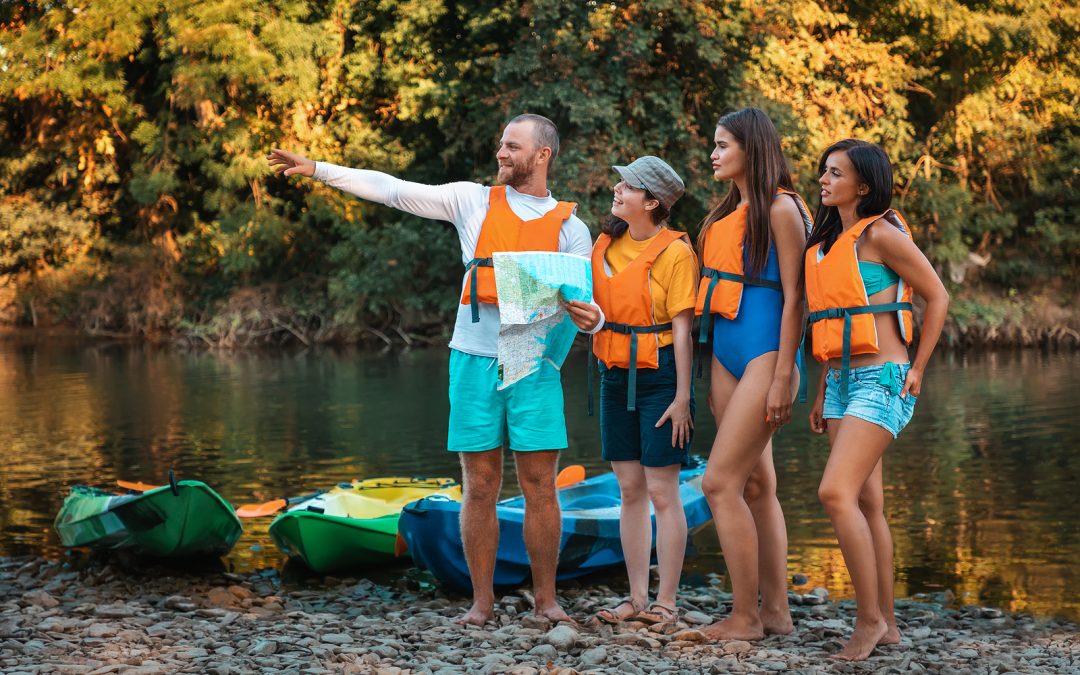How to Transport a Kayak: A Clear Guide for Safe and Easy Transport
Transporting a kayak can be a daunting task, especially if you’re new to the sport. However, with the right equipment and preparation, it can be done safely and efficiently. In this article, we will cover the key steps you need to take to transport your kayak from one location to another.
The first step in transporting a kayak is choosing the right equipment. This includes a roof rack or trailer, tie-down straps, and padding to protect your kayak during transport. Once you have the right equipment, you’ll need to prepare your kayak for transport by cleaning it and removing any loose items. Loading and securing your kayak properly is also important to ensure it doesn’t shift or fall off during transport.
Key Takeaways:
- Choosing the right transport equipment is crucial for safe and efficient kayak transport.
- Properly preparing your kayak for transport includes cleaning it and removing loose items.
- Loading and securing your kayak correctly is essential to prevent it from shifting or falling off during transport.
Choosing the Right Transport Equipment
Transporting a kayak safely and securely requires the right equipment. There are a variety of options available, including roof racks, trailers, and truck bed racks. When choosing the right transport equipment, it’s important to consider the type of vehicle you have, the number of kayaks you need to transport, and your budget.
Roof Racks
Roof racks are a popular option for transporting kayaks. They come in a variety of styles, including stackers, J-cradles, and kayak saddles. Roof racks can be attached to a variety of vehicles, including cars, SUVs, and trucks. When choosing a roof rack, it’s important to consider the weight capacity, the size of the kayak, and the type of roof rack system that will work best for your vehicle.
Trailers
Kayak trailers are another option for transporting kayaks. They are ideal for those who need to transport multiple kayaks or have a larger vehicle that can tow a trailer. Kayak trailers come in a variety of sizes and styles, including j-style racks and saddle kayak racks. When choosing a kayak trailer, it’s important to consider the weight capacity, the size of the trailer, and the type of hitch that will work best for your vehicle.
Truck Bed Racks
Truck bed racks are a great option for those who have a truck and want to transport their kayaks in the bed of the truck. They come in a variety of styles, including raised, flush, and fixed points. Truck bed racks can hold one or multiple kayaks, depending on the size of the rack. When choosing a truck bed rack, it’s important to consider the weight capacity, the size of the rack, and whether or not it is compatible with your truck.
Rack Accessories
In addition to the main transport equipment, there are a variety of rack accessories that can help make transporting your kayak easier and more secure. Removable roof racks, kayak cradles, and rack pads are just a few examples of the many accessories available. When choosing rack accessories, it’s important to consider the type of equipment you have and the size of your kayak.
Overall, choosing the right transport equipment for your kayak is essential for a safe and secure transport. By considering the type of vehicle you have, the number of kayaks you need to transport, and your budget, you can find the equipment that works best for your needs.
Preparing Your Kayak for Transport
Before transporting your kayak, it is important to properly prepare it to ensure a safe and secure journey. Here are some steps to follow when preparing your kayak for transport:
- Remove all gear from the kayak: Take out all paddles, life jackets, and any other gear that may be inside the kayak. This will help to reduce the weight of the kayak and prevent any damage to the gear.
- Secure the cockpit: If you have a kayak with a cockpit, make sure to cover it with a cockpit cover. This will prevent any debris or water from getting inside the kayak during transport.
- Protect the hull: To prevent any scratches or damage to the hull, use foam blocks or pads to cushion the kayak. Place the blocks or pads on the roof rack or trailer where the kayak will be placed.
- Load the kayak: When loading the kayak onto the roof rack or trailer, make sure to have someone assist you. Lift the kayak onto the rack or trailer and make sure it is centered and secure. If the kayak is loaded onto a trailer, make sure to tie it down securely using straps.
- Consider the length and weight of the kayak: Depending on the length and weight of the kayak, it may require additional support. For longer kayaks, it may be necessary to use additional foam blocks or pads to prevent any bending or warping. For heavier kayaks, it may be necessary to use stronger straps to ensure a secure hold.
By following these steps, you can ensure that your kayak is properly prepared for transport and will arrive at its destination safely and securely.
Loading and Securing Your Kayak
Loading and securing your kayak properly is essential to ensure a safe and smooth transportation experience. Here are some tips on how to do it:
Transporting a Kayak on a Truck Bed
If you have a truck bed, transporting your kayak is relatively easy. Simply place the kayak in the bed and secure it using cam straps or tie-down straps. Make sure the kayak is centered and secure, and use bow and stern lines to prevent it from shifting during transport. If you have a short bed, consider using a bed extender to provide additional support.
Transporting a Kayak on a Car
If you’re transporting a kayak on a car, you have a few options. Sedans can transport kayaks using a roof rack or a kayak carrier that attaches to the trunk or hatchback. For larger vehicles like SUVs or vans, you can also transport kayaks on a roof rack or use a trailer hitch to attach a kayak trailer.
Loading and Securing Your Kayak
When loading your kayak, it’s important to lift with your legs and not your back to avoid injury. If possible, have a second person help you lift and place the kayak on the roof rack or in the truck bed. Use the kayak’s carry handles to lift it, and avoid lifting it by the front or back.
Once the kayak is in place, use cam straps or tie-down straps to secure it to the roof rack or truck bed. Make sure the straps are tight and that the kayak is centered and secure. Use bow and stern lines to prevent the kayak from shifting during transport.
Safety Tips
When transporting a kayak, always use caution and follow safety guidelines. Make sure your vehicle is equipped to transport a kayak safely, and use appropriate straps and tie-downs. Use a warning flag on the end of your kayak to make it more visible to other drivers, especially if it extends beyond the length of your vehicle.
Finally, remember to take care of your back and use proper lifting techniques when loading and unloading your kayak. If you experience back pain or discomfort, consider using a kayak cart or enlisting the help of a second person to lift the kayak.
Transporting Different Types of Kayaks
Transporting a kayak can be a tricky task, especially when it comes to different types of kayaks. Different kayaks have different shapes, sizes, and weights, which can affect the way they are transported. Here are some tips on how to transport different types of kayaks:
Hardshell Kayaks
Hardshell kayaks are the most common type of kayak and can be transported in a variety of ways. The most common way to transport a hardshell kayak is by strapping it to the roof of a car or SUV. It is important to use proper kayak racks or foam blocks to protect the kayak and prevent it from sliding around during transport. It is also important to tie down the kayak securely using straps or ropes.
Inflatable Kayaks
Inflatable kayaks are becoming increasingly popular due to their portability and ease of storage. They can be transported in a small car trunk or even on a bicycle. When transporting an inflatable kayak, it is important to make sure it is properly deflated and packed away in a carrying bag. It is also important to protect the kayak from punctures or tears during transport.
Fishing Kayaks
Fishing kayaks are designed specifically for fishing and are often wider and heavier than other types of kayaks. When transporting a fishing kayak, it is important to use a kayak trailer or a roof rack with a weight capacity that can handle the weight of the kayak. It is also important to secure the kayak using straps or ropes to prevent it from shifting during transport.
Touring Kayaks
Touring kayaks are designed for long-distance paddling and are often longer and narrower than other types of kayaks. When transporting a touring kayak, it is important to use a kayak rack or foam blocks to protect the kayak and prevent it from sliding around during transport. It is also important to tie down the kayak securely using straps or ropes.
In summary, transporting different types of kayaks requires different methods and precautions. It is important to use proper equipment and secure the kayak properly to prevent damage during transport.
Safety Precautions When Transporting a Kayak
Transporting a kayak can be a tricky task, but it can be done safely with the right precautions. Here are some safety tips to keep in mind when transporting a kayak:
Use Tie-Down Straps
It’s important to secure the kayak to the roof rack or trailer using tie-down straps. Make sure the straps are tight enough to keep the kayak in place, but not too tight that they damage the kayak. Use at least two straps to secure the kayak to the roof rack or trailer.
Use a Warning Flag
When transporting a kayak, it’s important to use a warning flag at the end of the kayak to alert other drivers of your load. A warning flag can be a bright piece of fabric or a reflective triangle that attaches to the end of the kayak.
Check Your Load
Before hitting the road, make sure the kayak is properly secured and balanced on the roof rack or trailer. The kayak should be centered and not leaning to one side. Check the straps and connections to ensure they are secure.
Drive with Caution
When transporting a kayak, it’s important to drive with caution. Remember that the kayak adds height to the vehicle, so be aware of low clearances. Take turns slowly and avoid sudden stops or accelerations.
By following these safety precautions, transporting a kayak can be done safely and without incident.
Transporting a kayak can be a daunting task, but with the right preparation and equipment, it can be a breeze. First, make sure you have the proper roof rack and straps to secure your kayak. Next, carefully place your kayak on the roof rack and center it. Use the straps to secure the kayak to the rack, making sure they are tight and secure. If you’re transporting multiple kayaks, stack them on top of each other and secure them with additional straps. Finally, double-check that everything is secure before hitting the road. With these tips, you’ll be able to transport your kayak safely and easily.


Conclusion
Transporting a kayak is an essential part of owning one. With the right equipment and knowledge, it can be done safely and efficiently. In this article, we have covered various methods of transporting a kayak, including using roof racks, trailers, and foam blocks.
It is important to remember to always secure the kayak properly and check it regularly during transport. This will help to prevent any damage to the kayak or other vehicles on the road.
When choosing a method of transportation, it is essential to consider the size and weight of the kayak, as well as the distance and terrain of the journey. Roof racks are a popular method for short distances, while trailers are better suited for longer journeys.
Additionally, investing in high-quality equipment, such as tie-down straps and foam blocks, can make all the difference in ensuring a safe and stress-free journey.
Overall, with the right preparation and equipment, transporting a kayak can be a straightforward process. By following the guidelines outlined in this article, kayakers can transport their kayaks with confidence and ease.












